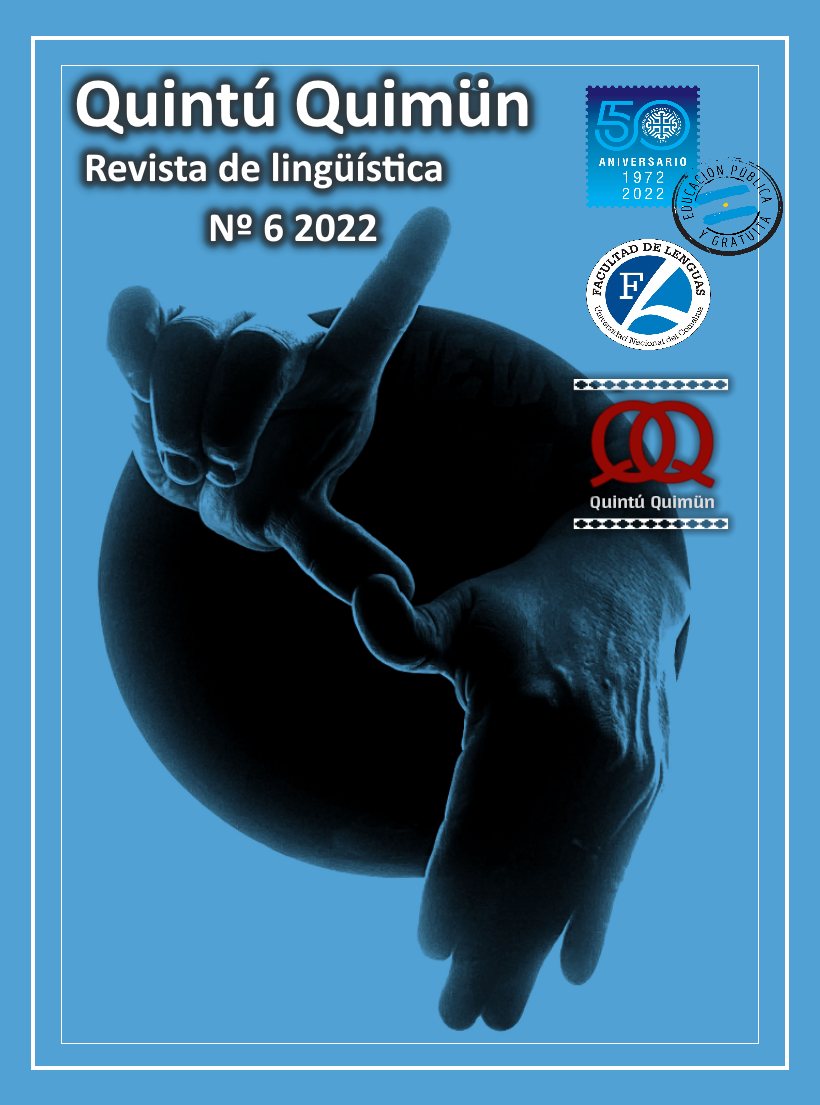Comparative study on color terms in Libras and LSA
Main Article Content
Abstract
LSA: https://www.youtube.com/watch?v=TgwX5R-PKvY&ab_channel=DiegoMorales
Abstract: Berlin & Kay (1969), based on the analysis of 98 spoken languages, claimed that all languages must have at least two terms for colors, one for white and one for black, and that if there are others, they must obey an implicational sequence. Applied to 10 historically and genetically unrelated signed languages, Woodward (1989) suggests that this universal holds for those languages as well. One of his findings, however, indicates a tendency to name colors more distant from white and black in the implicational sequence by borrowing them from the oral majority language. This article aims to compare the signs that name colors in Brazilian Sign Language, Libras, and in Argentine Sign Language, LSA, historically and genetically unrelated. Comparison parameters are based on the presence of phonological and lexical variation between the color signs, the motivation of native signs and the loan formation processes. In addition, it is also intended to compare these two languages in light of the patterns identified by Woodward (1989). Our results show differences in all parameters considered, with emphasis on the higher frequency of loan signs from the oral majority language in Libras as compared to LSA.
Downloads
Article Details

This work is licensed under a Creative Commons Attribution-NonCommercial-ShareAlike 4.0 International License.
Los autores de los artículos publicados conservan los derechos de copyright.
Licencia de uso:

Creative Commons Atribución-NoComercial-CompartirIgual 4.0 Internacional.
References
Abralin (5 de mayo de 2021). Bodo Winter [Archivo de Video]. YouTube. https://www.youtube.com/watch?v=R1ETw21oCGE
Adam, Robert (2012). Language contact and borrowing. En Roland Pfau, Markus Steinbach and Bencie Woll (eds.). Sign language: An international handbook. Berlin: Mouton de Gruyter, 841–861.
Alisedo, Graciela (Dir.). (1997). Diccionario Lengua de Señas Argentina-Español. República Argentina: Ministerio de Cultura y Educación de la Nación.
Berenz, Norine (2003). Surdos Venceremos: The rise of the Brazilian Deaf Community. En Monaghan, Leila. et al. (eds.). Many Ways to Be Deaf: International Variation in Deaf Communities. Washington: Gallaudet University Press. 173-193.
Berlin, Brent & Kay, Paul (1969). Basic Color Terms: Their Universality and Evolution. Berkeley and Los Angeles: University of California Press.
Brentari, Diane & Padden, Carol (2001). Native and foreign vocabulary in American Sign Language: A lexicon with multiple origins. En Diane Brentari (ed.). Foreign vocabulary in sign languages: A cross-linguistic investigation of word formation. Mahwah: Lawrence Erlbaum Associates. 87-119.
Brito, Lucinda Ferreira (1995). Por uma gramática de línguas de sinais. Rio de Janeiro: Edições Tempo Brasileiro.
Confederación Argentina de Sordos (2019). Señario de términos y expresiones en Lengua de Señas Argentina. Recuperado a partir de https://cas.org.ar/senario-de-terminos-y-expresiones-en-lengua-de-senas-argentina/ el 26 de mayo de 2022.
Crespo, Nina (Dir) (1993). Diccionario de Lenguaje de Señas de Córdoba. Córdoba, Argentina: Panorama Match.
Druetta, Juan Carlos (2008). La generación X de la comunidad sorda y la Lengua de Señas Argentina. Ethos Educativo, 41:139-166.
Frishberg, Nancy & Gouch, Bonnie (1973). Morphology in American Sign Language. Manuscript. The Salk Institute for Biological Studies. Publicado en Sign Language & Linguistics (2000), 3:103-131.
Gama, Flausino José (2011) [1875]. Iconographia dos signaes dos surdos-mudos. Série Histórica do INES. Rio de Janeiro: INES.
Johnston, Trevor Alexander & Schembri, Adam (2007). Australian Sign Language (Auslan): An introduction to sign language linguistics. Cambridge: Cambridge University Press.
Kay, Paul (1975). Synchronic variability and diachronic change in basic color terms. Language and Society, 4-3: 257-270.
Kay, Paul & McDaniel, Chad K. (1975). Color Categories as Fuzzy Sets. Working Papers of the Language Behavior Research Laboratory, 44.
Klima, Edward & Bellugi, Úrsula (1979). The Signs of Language. Cambridge: Harvard University Press.
Massone, María Ignacia & Curiel, Mónica. (s. f.). «Lengua de Señas Argentina y Comunidad Sorda». Publicaciones del G.E.S, 2: 2-22.
Massone, María Ignacia. (1993). Diccionario Bilingüe Lengua de Señas Argentina - Español-Inglés. 1 y 2 Vol. Buenos Aires: Sopena Argentina.
Massone, María Ignacia & Machado, Emilia (1994). Lengua de Señas Argentina. Análisis y Vocabulario Bilingüe. Buenos Aires: Edicial.
Martínez, Rocío. A. (2017). Reconsideración, desde un Enfoque Cognitivo-Prototípico, del adjetivo como clase de palabras en la Lengua de Señas Argentina. Tesis Doctoral, Facultad de Filosofía y Letras, Universidad de Buenos Aires.
Schmitt, Dionisio. (2013). A história da língua de sinais em Santa Catarina: contextos sócio-históricos e sociolinguísticos de surdos de 1946 a 2010. Tese de Doutorado em Linguística. Universidade Federal de Santa Catarina.
Spread The Sign. Dicionário de Língua de Sinais. Recuperado a partir de https://www.spreadthesign.com/pt.br/search/ el 26 de mayo de 2022.
Sofiato, Cássia G. (2011). Do desenho à litografia: a origem da língua brasileira de sinais. Tese (Doutorado do Curso de Artes Visuais) – Instituto de Artes. Campinas: Universidade Estadual de Campinas.
Taub, Sarah F. (2004) Language from The Body: Iconicity and Metaphor in American Sign Language. Cambridge, UK: Cambridge University Press.
Velupillai, Viveka (2012). An Introduction to Linguistic Typology. Amsterdam/Philadelphia: John Benjamins Publishing Company.
Witkowski, Stanley R. & Brown, Cecil H. (1977). An explanation of color nomenclature universale. American Anthropologist. v. 79. 1. 50-57.
Woodward, James. (1989). Basic Color Term Lexicalization across Sign Languages. Sign Language Studies, 63:145–152.
Xavier, André Nogueira & Barbosa, Plínio Almeida (2014). ¿Diferentes pronúncias em uma língua não sonora? Um estudo da variação na produção de sinais da Libras. Delta. v. 30. 2. 371-413. Recuperado a partir de https://revistas.pucsp.br/delta/article/view/17784 el 26 de mayo de 2022.
